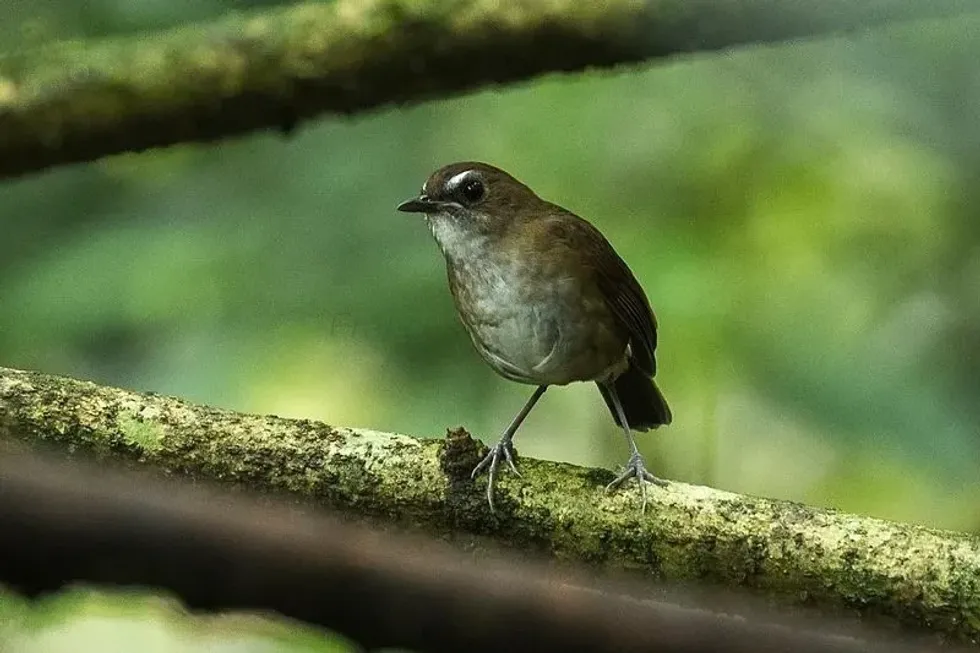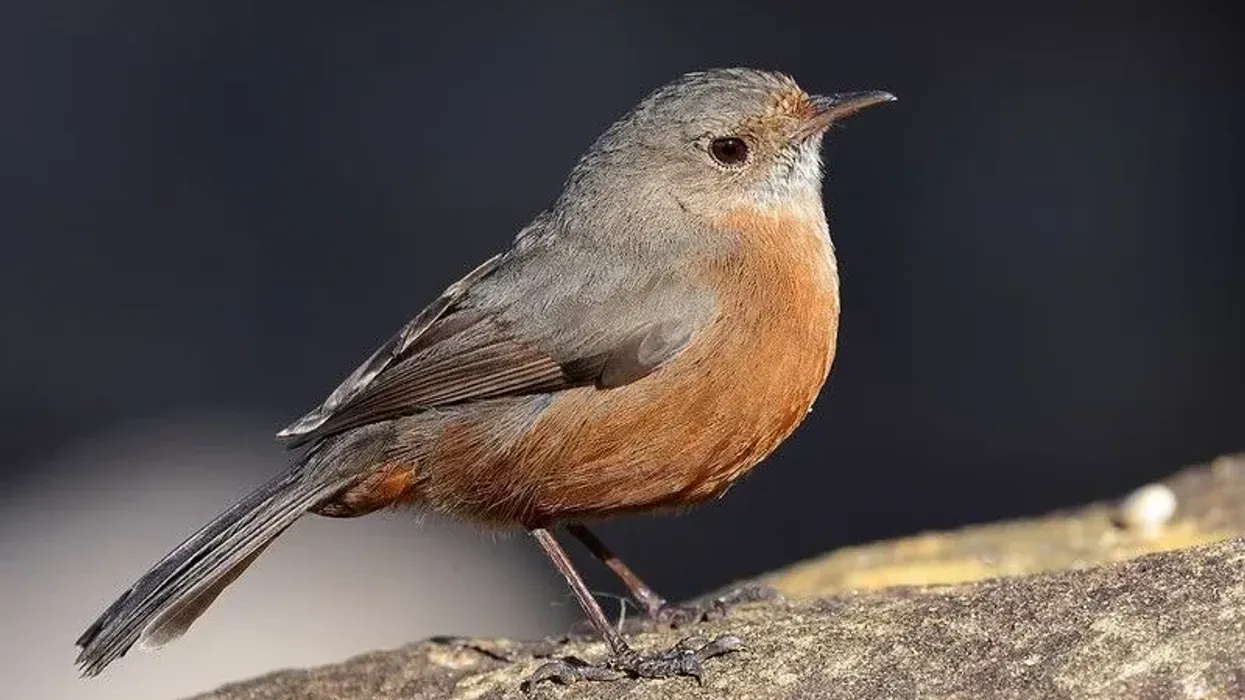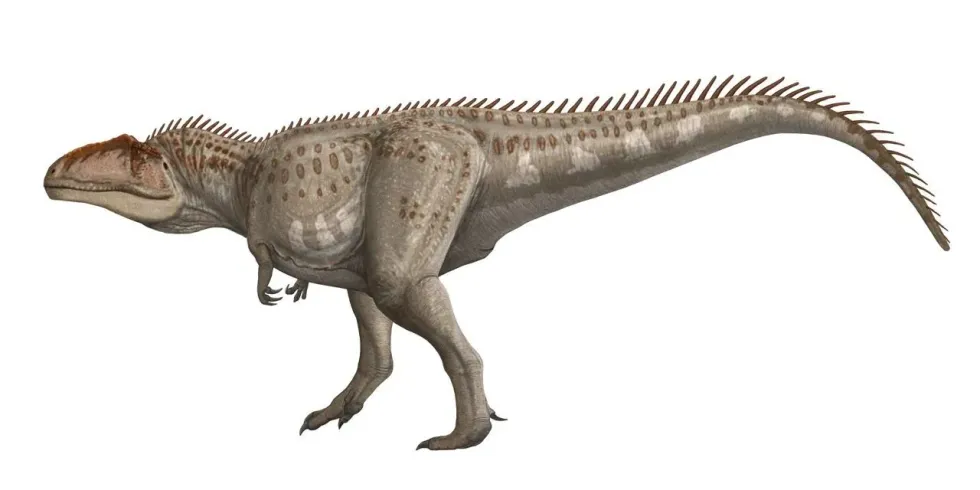The giant hummingbird (Patagona gigas) is the largest hummingbird found in the western South American region. This bird is very common in countries like Argentina, Bolivia, and the Andes regions.
This hummingbird is known by different names in different languages. In the Spanish language, they are known as Colibrí gigante, whereas in the French language, they are known as Colibri géant.
The country of Chile also has a different name for the giant hummingbird, which is Picaflor gigante, which is also a Spanish word.
Here on our page, we have a lot of interesting facts on the giant hummingbird for everyone to enjoy. Let's have a look at these interesting facts, and if you like these, do check out our fact files on palm cockatoo and umbrellabird.
Giant Hummingbird Interesting Facts
What type of animal is a giant hummingbird?
The giant hummingbird (Patagona gigas) is a western South American bird species. It is one of the largest hummingbirds found in South America.
Other types of hummingbirds include the bee hummingbird and the magnificent hummingbird.
What class of animal does a giant hummingbird belong to?
The giant hummingbird (Patagona gigas) belongs to the class of Aves and the genus of Patagona.
How many giant hummingbirds are there in the world?
The exact number of these giant hummingbirds is not available yet, but their conservation status is Least Concern according to the IUCN Red List. This means that they and their subspecies are safe in the world, and there is no sudden danger to this species.
Where does a giant hummingbird live?
The giant hummingbird (Patagona gigas) is a native hummingbird of South America. The range of distribution of these birds in western South America is in the countries of central Argentina, Peru, northern Bolivia, central Chile, and the Andes of northern Ecuador.
What is a giant hummingbird's habitat?
The giant hummingbird (Patagona gigas) prefers to habitat in areas that are above sea level. The range of areas include open woodlands, forests, scrublands, and mountains. These hummingbirds stay up in higher altitudes during summer and come down to a lower altitude during winter.
Who do giant hummingbirds live with?
Giant hummingbird (Patagona gigas) birds are not at all social animals. These birds prefer to live solitary their whole life and only come together when it is time to mate or to share a giant hummingbird feeder. Even during the migration period, these hummingbirds migrate solitary.
How long does a giant hummingbird live?
The average lifespan of a giant hummingbird (Patagona gigas) is approximately four to six years.
How do they reproduce?
Males of the giant hummingbird are a polygynous bird type, meaning they mate with more than one female at a time. Usually, breeding takes place during summers, and after the breeding process is finished, the males tend to leave the females.
The female bird raises the young on her own. The female builds the cup-shaped nest from the fibers of the green moss plant.
What is their conservation status?
According to the IUCN Red List, the conservation status of the giant hummingbird (Patagona gigas) is a Least Concern species. These birds are found in large numbers in western South America.
Giant Hummingbird Fun Facts
What do giant hummingbirds look like?
The giant hummingbird is the largest hummingbird in size found to date. These creatures have dull-colored bodies, longer wings, and bills. The tail of these creatures is in forked shape with strong feet.
There are tarsi feathers in the lace of toes. The pattern of feathers in this bird is dull brown or gray in color with white color here and there. The beak of this hummingbird is long.
How cute are they?
Although these hummingbirds have a dull color body, they still look quite adorable and cute.
How do they communicate?
The communication process of the giant hummingbird (Patagona gigas) is through the use of vocalizations that they produce. Whistles, chirps, and chittering are some of the vocals which they use for communicating. They also fly towards each other and chase each other as a form of communication.
How big is a giant hummingbird?
There are different sizes, weights, and lengths of hummingbirds, depending on their species. The average giant hummingbird size is around 7.9 in (20 cm) in length. These birds are the largest hummingbirds in size found in the western South America region. The length of other species of hummingbirds is around 3-4 in (7.6-10.2 cm) large.
How fast can a giant hummingbird fly?
Giant hummingbird wings can beat at the speed of 15 times per second during its flight. As per the hummingbirds of North America, this is not the fastest wing speed as these North American birds can beat their wings 53 times per second. These birds are known to fly backwards while hovering their tails.
How much do giant hummingbirds weigh?
The average weight of giant hummingbirds is around 0.7 oz (20 g) in total, and they have a medium length.
What are the male and female names of the species?
There are no specific names for male and female birds in the species of giant hummingbird.
What would you call a baby giant hummingbird?
There is no particular name for the baby giant hummingbird. They are just called young chicks.
What do they eat?
The usual diet that giant hummingbirds follow is to feed on the nectar of flowers. They are omnivorous animals who are also noticed feeding on spiders and flying insects. Their special feature is that they can feed on the nectar of flowers even when they are hovering.
Are they friendly?
Hummingbirds are known to be friendly in nature. These giant hummingbirds are so gentle that they can feed happily from your hands, but only if they feel safe with you.
Would they make a good pet?
The giant hummingbird cannot be a good pet to a human. The reason behind this is that these creatures cannot survive in confined areas. Another reason is that they feed on nectar from flowers and small flying insects, which a human cannot provide to them.
Did you know...
The migration period of giant hummingbird is usually in the summer season when the temperature is above 44 C (111.2 F).
Whose wings beat faster: those of a ruby-throated hummingbird or a giant hummingbird?
The wings of the ruby-throated hummingbird beat faster than the giant hummingbird. The ruby-throated can beat their wings 75 times in a second, whereas the giant hummingbird can beat its wings 15 times in a second, which is less than the ruby-throated.
What is the largest hummingbird in the world?
The largest hummingbird found in the world is the giant hummingbird with an average length of 7.9 in (20 cm), whereas other hummingbirds are only around 3 in (7.6 cm) in length. The blue-throated hummingbird is the largest in North America.
Here at Kidadl, we have carefully created lots of interesting family-friendly animal facts for everyone to discover! For more relatable content, check out these yellow warbler facts and willow warbler facts for kids.
You can even occupy yourself at home by coloring in one of our free printable bird coloring pages.









